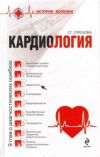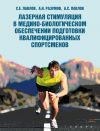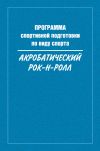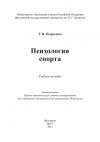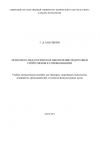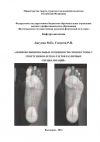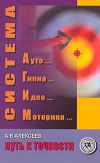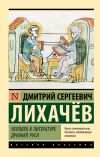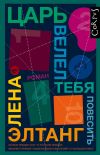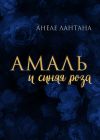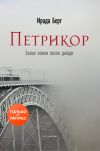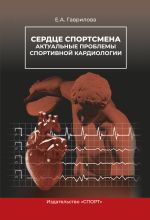
Автор книги: Елена Гаврилова
Жанр: Медицина, Наука и Образование
Возрастные ограничения: +12
сообщить о неприемлемом содержимом
Текущая страница: 9 (всего у книги 32 страниц) [доступный отрывок для чтения: 9 страниц]
Заключение по главе 2
Систематические тренировки вызывают электрофизиологическое ремоделирование сердца спортсмена, что отражается на его электрокардиограмме. Это связано как с повышенным тонусом блуждающего нерва, так и с морфологическим ремоделированием сердца. В связи с этим ЭКГ спортсмена может в значительной мере отличаться от ЭКГ людей того же возраста, пола и этнической принадлежности, не занимающихся спортом. Поэтому использование в интерпретации ЭКГ атлетов нормативных электрокардиографических значений, принятых для общей популяции, нередко приводит к ложноположительным результатам.
К ЭКГ-критериям физиологического спортивного сердца относят такие ЭКГ-маркеры повышенного тонуса блуждающего нерва, как брадикардия, синусовая аритмия, эктопический предсердный ритм (миграция водителя ритма по предсердиям, нижнепредсердный ритм) и АВ-блокада I и II степени (тип Мобитц I). В последние годы в качестве варианта нормы обсуждается даже узловой ритм в покое у спортсменов при условии, что комплекс QRS должен быть менее 120 мс и не иметь признаков блокад ветвей пучка Гиса. Однако данные признаки являются физиологичными до определенных пределов.
В каждом конкретном случае вопрос о происхождении выраженной брадикардии, смещении водителя ритма, синусовой аритмии, задержки АВ-проведения должен решаться с учетом спортивного анамнеза и наличия (или отсутствия) патологии со стороны ССС у спортсмена, поскольку данные изменения могут означать как высокое функциональное состояние спортсмена, так и нарушения ритма и проводимости сердца, а также его парасимпатической регуляции. И в том, и в другом случае данные электрофизиологические изменения должны нивелироваться при физической активности, а синусовый ритм должен восстанавливаться.
ЭКГ-признаками морфологического ремоделирования сердца являются:
1. Неполная блокада правой ножки пучка Гиса или гипертрофия правого желудочка (RV1 + SV5 или SV6>1,1 мВ) как отражение дилатации правого желудочка;
2. ЭКГ-признаки гипертрофии левого желудочка (признаки Соколова-Лайона) (SV1 + RV5 или RV6>3,5 мВ) как отражение дилатации левого желудочка сердца.
Кроме того, есть ряд изменений на ЭКГ спортсменов, которые сегодня не относят к проявлениям электрофизиологического ремоделирования сердца спортсмена, однако считают вариантами нормальной ЭКГ у спортсменов: синдром ранней реполяризации, юношеский паттерн зубца T у спортсменов младше 16 лет и вариант реполяризации у чернокожих спортсменов.
12-канальная ЭКГ была и остается одним из наиболее доступных и эффективных скрининговых методов во врачебном контроле за спортсменами. Однако следует помнить, что при наличии у спортсмена симптомов сердечных заболеваний или предрасположенности к ним, а также случаев ранних внезапных сердечных смертей в семье даже нормальная ЭКГ не должна препятствовать дальнейшему обследованию и оценке сердечно-сосудистого риска у атлета.
Список литературы к главе 2
1. Анохин, П. К. Очерки по физиологии функциональных систем. – М.: Медицина, 1975. – 447 с.
2. Бутченко, Л. А. Дистрофия миокарда у спортсменов / Л. А. Бутченко, М. С. Кушаковский, Н. Б. Журавлева. – М.: Медицина, 1980. – 225 с.
3. Викулов, А. Д. Вариабельность сердечного ритма у лиц с повышенным режимом двигательной активности и спортсменов / А. Д. Викулов, А. Д. Немиров, Е. Л. Ларионова, А. Ю. Шевченко // Физиология человека. – 2005. – Т. 31. – № 6. – С. 54.
4. Гаврилова, Е. А. Использование вариабельности ритма сердца в оценке успешности спортивной деятельности / Е. А. Гаврилова // Практическая медицина. – 2015. – Т. 88. – № 1. – С. 52–58.
5. Гаврилова, Е. А. Клинические и экспертные вопросы электрокардиографии в спортивной медицине / Е. А. Гаврилова. – М.: Спорт, 2019. – 272 с.
6. Гаврилова, Е. А. Прогнозирование аэробных способностей высококвалифицированных лыжников по данным вариационной пульсометрии / Е. А. Гаврилова, О. А. Чурганов // Вестник спортивной науки. – 2012. – № 4. – С. 3–5.
7. Гаврилова, Е. А. Спорт, стресс, вариабельность / Е. А. Гаврилова. – М.: Спорт, 2015. – 170 с.
8. Гаврилова, Е. А. Факторы риска внезапной сердечной смерти спортсменов на разных этапах спортивной подготовки по данным кардиологического обследования / Е. А. Гаврилова, О. С. Ларинцева // Спортивная медицина: наука и практика. – 2018. – Т. 8. – № 2. – С. 33–36.
9. Дегтярева, Е. А. Актуальные проблемы детской спортивной кардиологии / Е. А. Дегтярев, Б. А. Поляев, М. А. Школьникова, Л. М. Макаров, А. С. Шарыкин, З. Г. Ордженикидзе, Е. В. Линде, В. И. Павлов, О. А. Муханов, О. И. Жданова, И. И. Ахметов. – М.: РАС-МИРБИ, 2009. – 132 с.
10. Земцовский, Э. В. Спортивная кардиология / Э. В. Земцовский. – СПб.: Гиппократ, 1995. – 448 с.
11. Макаров, Л. М. Изменения показателей реполяризации у молодых спортсменов при проведении пробы с дозированной физической нагрузкой / Л. М. Макаров, Н. Н. Федина, В. Н. Комолятова // Медицинский алфавит. – 2016. – Т. 1. – № 11. – С. 14–19.
12. Медведев, М. М. Паттерн и синдром ранней реполяризации: вопросов больше, чем ответов / М. М. Медведев, О. Е. Велеславова // Вестник аритмологии. – 2019. – Т. 95. – № 1. – С. 61–65.
13. Пармон, Е. В. Фрагментация QRS-комплекса – важный электрокардиографический маркер нарушения деполяризации / Е. В. Пармон, М. С. Гордеева, Т. А. Куриленко, Э. Р. Бернгардт // Российский кардиологический журнал. – 2017. – № 8. – С. 90–95.
14. Шлык, Н. И. Сердечный ритм и тип регуляции у детей, подростков и спортсменов / Н. И. Шлык // Ижевск: Удмуртский университет, 2009. – 255 с.
15. Abdulla, J. Is the risk of atrial fibrillation higher in athletes than in the general population? A systematic review and meta-analysis / J. Abdulla, J. R. Nielsen // Europace. – 2009. – V. 11. – № 9. – P. 1156–9.
16. Adea, J. B. Sport disciplines and cardiac remodeling in elite university athletes competing in 2017 Taipei Summer Universiade / J. B. Adea, R. M. Leonor, C. H. Lu, L. C. Lin et al. // Medicine (Baltimore). – 2020. – V. 99. – № 45. – e23144.
17. Anderson, J. L. Management of patients with atrial fibrillation (compilation of 2006 ACCF/AHA/ESC and 2011 ACCF/AHA/HRS recommendations): a report of the American College of Cardiology/American Heart Association Task Force on Practice Guidelines / J. L. Anderson, J. L. Halperin, N. M. Albert et al. // J Am Coll Cardiol. – 2013. – № 61. – P. 1935–1944.
18. Basavarajaiah, S. Prevalence and significance of an isolated long QT interval in elite athletes / S. Basavarajaiah, M. Wilson, G. Whyte, A. Shah, E. Behr, S. Sharma // Eur Heart J. – 2007. – № 28. – P. 2944–2949.
19. Bessem, B. Gender differences in the electrocardiogram screening of athletes / B. Bessem, M. C. de Bruijn, W. Nieuwland // J Sci Med Sport. – 2017. – V. 20. – № 2. – Р. 213–217.
20. Bessem, B. The electrocardiographic manifestations of athlete's heart and their association with exercise exposure / B. Bessem, M. C. De Bruijn, W. Nieuwland, J. Zwerver et al. // Eur J Sport Sci. – 2018. – V. 18. – № 4. – P. 587–593.
21. Biffi, A. Long-term clinical significance of frequent and complex ventricular tachyarrhythmias in trained athletes / A. Biffi, A. Pelliccia, L. Verdile, F. Fernando, A. Spataro, S. Caselli, M. Santini, B. J. Maron // J Am Coll Cardiol. – 2002. – № 40. – P. 446–452.
22. Borjesson, M. Cardiovascular evaluation of middle-aged/senior individuals engaged in leisure-time sport activities: position stand from the sections of exercise physiology and sports cardiology of the European Association of Cardiovascular Prevention and Rehabilitation / M. Borjesson, A. Urhausen, E. Kouidi, et al. // Eur J Cardiovasc Prev Rehabil. – 2011. – № 18. – P. 446–458.
23. Brosnan, M. J. Athlete's ECG – Simple Tips for Navigation / M. J. Brosnan // Heart Lung Circ. – 2018. – V. 27. – № 9. – P. 1042–1051.
24. Brosnan, M. J. Differentiating Athlete's Heart From Cardiomyopathies – The Left Side / M. J. Brosnan, D. Rakhit // Heart Lung Circ. – 2018. – V. 27. – № 9. – P. 1052–1062.
25. Calo, L. Echocardiographic findings in 2261 peri-pubertal athletes with or without inverted T waves at electrocardiogram / L. Calo, F. Sperandii, A. Martino et al. // Heart. – 2015. – № 101. – P. 193–200.
26. Carbone, A. Cardiac damage in athlete's heart: When the «supernormal» heart fails! / A. Carbone, A. D'Andrea, L. Riegler et al. // World J Cardiol. – 2017. – V. 9. № 6. – P. 470–480.
27. Charron, P. Diagnostic value of electrocardiography and echocardiography for familial hypertrophic cardiomyopathy in genotyped children / P. Charron, O. Dubourg, M. Desnos, J. B. Bouhour, R. Isnard, A. Hagege et al. // Eur Heart J. – 1998. – № 19. – P. 1377–82.
28. Cohen, M. I. PACES/HRS expert consensus statement on the management of the asymptomatic young patient with a Wolff-Parkinson-White (WPW, ventricular preexcitation) electrocardiographic pattern: developed in partnership between the Pediatric and Congenital Electrophysiology Society (PACES) and the Heart Rhythm Society (HRS). Endorsed by the governing bodies of PACES, HRS, the American College of Cardiology Foundation (ACCF), the American Heart Association (AHA), the American Academy of Pediatrics (AAP), and the Canadian Heart Rhythm Society (CHRS) / M. I. Cohen, J. K. Triedman, B. C. Cannon et al. // Heart Rhythm. – 2012. – № 9. – P. 1006–1024.
29. Corrado, D. Molecular biology and clinical management of arrhythmogenic right ventricular cardiomyopathy/dysplasia / D. Corrado, C. Basso, K. Pilichou, G. Thiene // Heart. – 2011. – № 97 – P. 530–9.
30. Corrado, D. Recommendations for interpretation of 12-lead electrocardiogram in the athlete / D. Corrado, A. Pelliccia, H. Heidbuchel et al. // Eur Heart J. – 2010. – № 31. – P. 243–59.
31. Corrado, D. Three-dimensional electroanatomical voltage mapping and histologic evaluation of myocardial substrate in right ventricular outflow tract tachycardia / D. Corrado, C. Basso, L. Leoni et al. // J Am Coll Cardiol. – 2008. – № 51. – P. 731–739.
32. D'Ascenzi, F. Atrial chamber remodelling in healthy pre-adolescent athletes engaged in endurance sports: A study with a longitudinal design. The CHILD study / F. D'Ascenzi, M. Solari, F. Anselmi et al.// Int J Cardiol. – 2016. – № 223. – P. 325–330.
33. D'Ascenzi, F. P-wave morphology is unaffected by training-induced biatrial dilatation: a prospective, longitudinal study in healthy athletes / F. D'Ascenzi, M. Solari, M. Biagi et al. // Int J Cardiovasc Imaging. – 2016. – V. 32. – № 3. – Р. 407–15.
34. Dhutia, H. The prevalence and significance of a short QT interval in 18 825 low-risk individuals including athletes / H. Dhutia, A. Malhotra, S. Parpia et al. // Br J Sports Med. – 2016. – № 50. – P. 124–129.
35. Doyen, B. Asymptomatic bradycardia amongst endurance athletes / B. Doyen, D. Matelot, F. Carré // Phys Sportsmed. – 2019. – P. 1–4.
36. Drezner, J. A. Electrocardiographic interpretation in athletes: the ' Seattle criteria' / J. A. Drezner, M. J. Ackerman, J. Anderson et al. // Br J Sports Med. – 2013. – № 47. – P. 122–124.
37. D'Souza, A. Exercise training reduces resting heart rate via downregulation of the funny channel HCN4 / A. D'Souza, A. Bucchi, A. B. Johnsen et al. // Nat Commun. – 2014. – 13;5:3775.
38. D'Souza, A. Targeting miR-423-5p Reverses Exercise Training-Induced HCN4 Channel Remodeling and Sinus Bradycardia / A. D'Souza, C. M. Pearman, Y. Wang et al. // Circ Res. – 2017. – V. 121. – № 9. – P. 1058–1068.
39. Dunn, T. Are the QRS duration and ST depression cut-points from the Seattle criteria too conservative? / T. Dunn, R. Abdelfattah, S. Aggarwal, D. Pickham, D. Hadley // Froelicher J Electrocardiol. – 2015. – № 48. – P. 395–398.
40. Elliott, A. D. Atrial remodeling and ectopic burden in recreational athletes: Implications for risk of atrial fibrillation / A. D. Elliott, R. Mahajan, D. Linz et al. // Clin Cardiol. – 2018. – V. 41. – № 6. – P. 843–848.
41. Elliott, A. D. Exercise and Atrial Fibrillation: Prevention or Causation? / A. D. Elliott, D. Linz, C. V. Verdicchio, P. Sanders // Heart Lung Circ. – 2018. – V. 27. – № 9. – P. 1078–1085.
42. Everett, B. M. Physical activity, and the risk of incident atrial fibrillation in women / B. M. Everett, D. Conen, J. E. Buring et al. // Circ Cardiovasc Qual Outcomes. – 2011. – V. 4. – № 3. – P. 321–327.
43. Finocchiaro, G. Effect of sex and sporting discipline on LV adaptation to exercise / G. Finocchiaro, H. Dhutia, A. D’Silva, A. Malhotra, A. Steriotis, L. Millar et al. // JACC Cardiovasc Imaging. – 2017. – V. 10. – № 9. – P. 965–972.
44. Finocchiaro, G. Electrocardiographic differentiation between «benign T-wave inversion» and arrhythmogenic right ventricular cardiomyopathy / G. Finocchiaro, M. Papadakis, H. Dhutia, A. Zaidi, A. Malhotra, E. Fabi et al. // Europace. – 2018. – № 9. – Р. 1–7.
45. Gati, S. Should axis deviation or atrial enlargement be categorised as abnormal in young athletes? The athlete's electrocardiogram: time for re-appraisal of markers of pathology / S. Gati, N. Sheikh, S. Ghani et al. // Eur Heart J. – 2013. – V. 34. – № 47. – P. 3641–8.
46. Gomes, J. Electrophysiological abnormalities precede overt structural changes in arrhythmogenic right ventricular cardiomyopathy due to mutations in desmoplakin-A combined murine and human study / J. Gomes, M. Finlay, A. K. Ahmed, E. J. Ciaccio, A. Asimaki, J. E. Saffitz et al. // Eur Heart J. – 2012. – № 33. – P. 1942–53.
47. Grimsmo, J. High prevalence of atrial fibrillation in long-term endurance cross-country skiers: echocardiographic findings and possible predictors-a 28–30 years follow-up study / J. Grimsmo, I. Grundvold et al. // Eur J Cardiovasc Prev Rehabil. – 2010. – V. 17. – № 1. – P. 100–5.
48. Gronwald, T. Correlation properties of heart rate variability during endurance exercise: A systematic review / T. Gronwald, O. Hoos // Ann Noninvasive Electrocardiol. – 2020. – V. 25. – № 1. – P. e12697.
49. Haissaguerre, M. Sudden cardiac arrest associated with early repolarization / M. Haissaguerre, N. Derval, F. Sacher // N Engl J Med. – 2008. – № 358. – P. 2016–2023.
50. Harmon, K. G. The effectiveness of screening history, physical exam, and ECG to detect potentially lethal cardiac disorders in athletes: a systematic review/meta-analysis / K. G. Harmon, M. Zigman, J. A. Drezner // J Electrocardiol. – 2015. – V. 48. – № 3. – P. 329–338.
51. Huttin, O. Electrocardiographic patterns and long-term traininginduced time changes in 2484 elite football players / O. Huttin, C. Selton-Suty, C. Venner et al. // Arch Cardiovasc Dis. – 2018. – V. 111. – № 5. – P. 380–388.
52. Jain, R. Fragmented ECG as a risk marker in cardiovascular diseases / Jain R., Singh R., Yamini S., Das M. K. // Current Cardiology Reviews. – 2014. – V. 10. – № 3. – P. 277–286.
53. Kamal, K. S. Early repolarisation and J wave syndromes / K. S. Kamal, S. B. Kabir Sethi, K. C. Surendra Chutani // Indian Heart J. – 2014. – V. 66. – № 4. – P. 443–452.
54. Kim, J. H. Significance of electrocardiographic right bundle branch block in trained athletes / J. H. Kim, P. A. Noseworthy, D. McCarty et al. // Am J Cardiol. – 2011. – № 107. – P. 1083–1089.
55. Konopka, M. Prevalence and determinants of the early repolarisation pattern in a group of young high endurance rowers / M. Konopka, K. Burkhard-Jagodzińska, K. Anioł-Strzyżewska, W. Król, A. Klusiewicz, J. Chwalbińska, A. Pokrywka, D. Sitkowski, M. Dłużniewski, W. Braksator // Kardiol Pol. – 2016. – V. 74. – № 3. – P. 289–299.
56. Krenc, Z. Relationship Between Adaptive Morphological and Electrophysiological Remodeling of the Left Ventricle in Young Athletes After an 8-Month Period of Sports Training / Z. Krenc // Pediatr Exerc Sci. – 2016. – V. 28. – № 1. – P. 71–76.
57. Kreso, A. Electrocardiographic and Echocardiographic Imaging of the Heart of Athletes and Patients with Hypertension / A. Kreso, F. Barakovic, S. Medjedovic et al. // Med Arch. – 2015. – V. 69. – № 5. – P. 319–322.
58. La Gerche, A. What May the Future Hold for Sports Cardiology? / A. Gerche, A. Baggish, H. Heidbuchel et al. // Heart Lung Circ. – 2018. – V. 27. – № 9. – P. 1116–1120.
59. Magalski, A. Relation of race to electrocardiographic patterns in elite American football players / A. Magalski, B. J. Maron, M. L. Main et al. // J Am Coll Cardiol. – 2008. – V. 23. – № 51. – P. 2250–5.
60. Malhotra, A. Accuracy of the 2017 international recommendations for clinicians who interpret adolescent athletes' ECGs: a cohort study of 11 168 British white and black soccer players / A. Malhotra, H. Dhutia, T. J. Yeo, G. Finocchiaro et al. // Br J Sports Med. – 2020. – V. 54. – № 12. – P. 739–745.
61. Malhotra, A. Anterior T-wave inversion in young white athletes and nonathletes / A. Malhotra, H. Dhutia, S. Gati, T-J. Yeo, H. Dores, R. Bastiaenen et al. // J Am Coll Cardiol. – 2017. – V. 1. – № 69. – P. 1–9.
62. Maron, B. J. 36th Bethesda Conference: eligibility recommendations for competitive athletes with cardiovascular abnormalities / B. J. Maron, D. P. Zipes // J Am Coll Cardiol. – 2005. – V. 45. – № 2. – P. 64.
63. McClean, G. Diagnostic accuracy and Bayesian analysis of new international ECG recommendations in paediatric athletes / G. McClean, N. R. Riding, G. Pieles et al. // Heart. – 2019. – № 105. – P. 152–159.
64. McClean, G. Electrical and structural adaptations of the paediatric athlete's heart: a systematic review with meta-analysis / G. McClean, N. R. Riding, C. L. Ardern et al. // Br J Sports Med. – 2018. – V. 52. – № 4. – P. 230.
65. Migliore, F. Prevalence of cardiomyopathy in Italian asymptomatic children with electrocardiographic T wave inversion at preparticipation screening / F. Migliore, A. Zorzi, P. Michieli et al. // Circulation. – 2012. – V. 125. – № 3. – P. 528–538.
66. Morseth, B. Physical activity, resting heart rate, and atrial fibrillation: the Tromsø study / B. Morseth, S. Graff Iversen, B. K. Jacobsen et al. // Eur Heart J. – 2016. – № 37. – P. 2307–2313.
67. Mozos, I. Electrocardiographic Predictors of Cardiovascular Mortality / I. Mozos A. Caraba // Dis Markers. – 2015. – P. 7274–01.
68. Myerburg, R. J. The Screening ECG and Cardiac Risks / R. J. Myerburg // JAMA. – 2018. – V. 319. – № 22. – P. 2277–2279.
69. Novak, J. Electrocardiographic differentiation of idiopathic right ventricular outflow tract ectopy from early arrhythmogenic right ventricular cardiomyopathy / J. Novak, A. Zorzi, S. Castelletti et al. // Europace. – 2017. – 19(4): 622–628.
70. Panhuyzen-Goedkoop, N. M. A new consensus document on electrocardiographic interpretation in athletes: does it help to prevent sudden cardiac death // Neth Heart J. – 2018. – 26(3): 127–132.
71. Papadakis, M. Prevalence and significance of T-wave inversions in predominantly Caucasian adolescent athletes / M. Papadakis, S. Basavarajaiah, J. Rawlins et al. // Eur Heart J. – 2009. – 30(14): 1728-35.
72. Papadakis, M. The prevalence, distribution, and clinical outcomes of electrocardiographic repolarization patterns in male athletes of African. Afro-Caribbean origin / M. Papadakis, F. Carre, G. Kervio, et al. // Eur Heart J. – 2011. – № 32. – P. 2304–13.
73. Pelliccia, A. Recommendations for competitive sports participation in athletes with cardiovascular disease. A consensus document from the Study Group of Sports Cardiology of the Working Group of Cardiac Rehabilitation and Exercise Physiology, and the Working Group of Myocardial and Pericardial diseases of the European Society of Cardiology / A. Pelliccia, R. Fagard, H. H. Bjшrnstad et al. // Eur Heart J 2005. – № 26. – P. 1422–45.
74. Pieles, G. E. The adolescent athlete's heart; A miniature adult or grown-up child? / G. E. Pieles, A. G. Stuart. Clin Cardiol. – 2020. – V. 8. – № 43. – P. 852–862.
75. Prior, D. Differentiating Athlete's Heart from Cardiomyopathies – The Right Side / D. Prijor // Heart Lung Circ. – 2018. – V. 27. – № 9. – P. 1063–1071.
76. Priori, S. G. HRS/EHRA/APHRS expert consensus statement on the diagnosis and management of patients with inherited primary arrhythmia syndromes: document endorsed by HRS, EHRA, and APHRS in May 2013 and by ACCF, AHA, PACES, and AEPC in June 2013 / S. G. Priori, A. A. Wilde, M. Horie et al. // Heart Rhythm. – 2013. – № 10. – P. 1932–1963.
77. Riding, N. R. Comparison of three current sets of electrocardiographic interpretation criteria for use in screening athletes / N. R. Riding, N. Sheikh, C. Adamuz et al. // Heart. – 2015. – № 101. – Р. 384–390.
78. Riding, N. R. ECG and morphologic adaptations in Arabic athletes: are the European Society of Cardiology’s recommendations for the interpretation of the 12 lead ECG appropriate for this ethnicity? / N. R. Riding, O. Salah, S. Sharma et al. // Br J Sports Med. – 2014. – № 48. – P. 1138–43.
79. Rijnbeek, P. R. New normal limits for the paediatric electrocardiogram / P. R. Rijnbeek, M. Witsenburg, E. Schrama, J. Hess, J. A. Kors // Eur Heart J. – 2001. – № 22. – P. 702–711.
80. Senturk, T. Cardiac pauses in competitive athletes: a systematic review examining the basis of current practice recommendations / T. Senturk, H. Xu, K. Puppala et al. //Europace. – 2016. – V. 18. – № 12. – P. 1873–1879.
81. Sharma, M. D. International Recommendations for Electrocardiographic Interpretation in Athletes / Sharma M. D., Drezner J. A. et al. // Journal of the American College of CardiologyVolume. – 2017. – V. 69. – № 8. – P. 1057–1075.
82. Speranza, G. Adult ECG criteria for left ventricular hypertrophy in young competitive athletes / G. Speranza, L. Magaudda, C. de Gregorio // Int J Sports Med. – 2014. – V. 35. – № 3. – P. 253–258.
83. Verdile, L. Clinical significance of exercise-induced ventricular tachyarrhythmias in trained athletes without cardiovascular abnormalities / L. Verdile, B. J. Maron, A. Pelliccia, A. Spataro, M. Santini, A. Biffi // Heart Rhythm. – 2015. – № 12. – P. 78–85.
84. Wilhelm, M. Atrial remodeling, autonomic tone, and lifetime training hours in nonelite athletes / M. Wilhelm, L. Roten, H. Tanner et al. // Am J Cardiol. – 2011. – № 108. – P. 580–585.
85. Wilson, M. G. IOC Manual of Sports Cardiology / M. G. Wilson, J. A. Drezner, S. Sharma / International Olympic Committee Published by John Wiley & Sons, Lt, 2017. – 511 p.
86. Wilson, M. G. Prevalence of electrocardiographic abnormalities in West Asian and African male athletes M. G. Wilson, J. C. Chatard, F. Carre et al. // Br J Sports Med. – 2012. – № 46. – P. 341–7.
87. Wyman, R. A. The 5-minute screening echocardiogram for athletes / R. A. Wyman, R. Y. Chiu, P. S. Rahko // J Am Soc Echocardiogr. – 2008. – № 21. – P. 786–8.
88. Zdravkovic, M. Correlation between ECG changes and early left ventricular remodeling in preadolescent footballers / M. Zdravkovic, B. Milovanovic, S. Hinic et al. // Physiol Int. – 2017. – V. 104. – № 1. – P. 42–51.
Внимание! Это не конец книги.
Если начало книги вам понравилось, то полную версию можно приобрести у нашего партнёра - распространителя легального контента. Поддержите автора!Правообладателям!
Данное произведение размещено по согласованию с ООО "ЛитРес" (20% исходного текста). Если размещение книги нарушает чьи-либо права, то сообщите об этом.Читателям!
Оплатили, но не знаете что делать дальше?